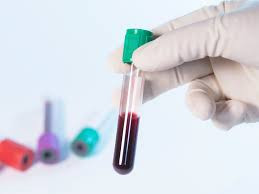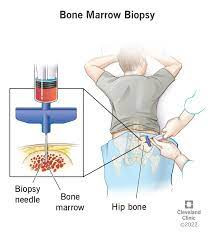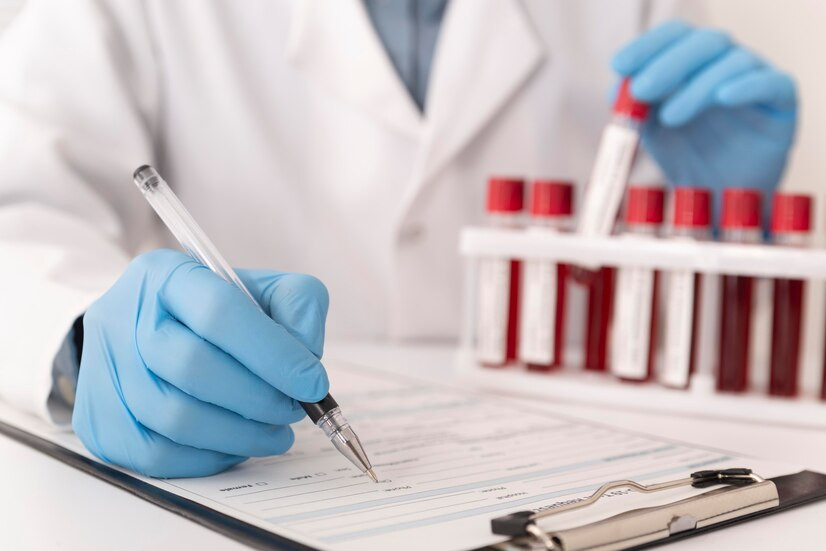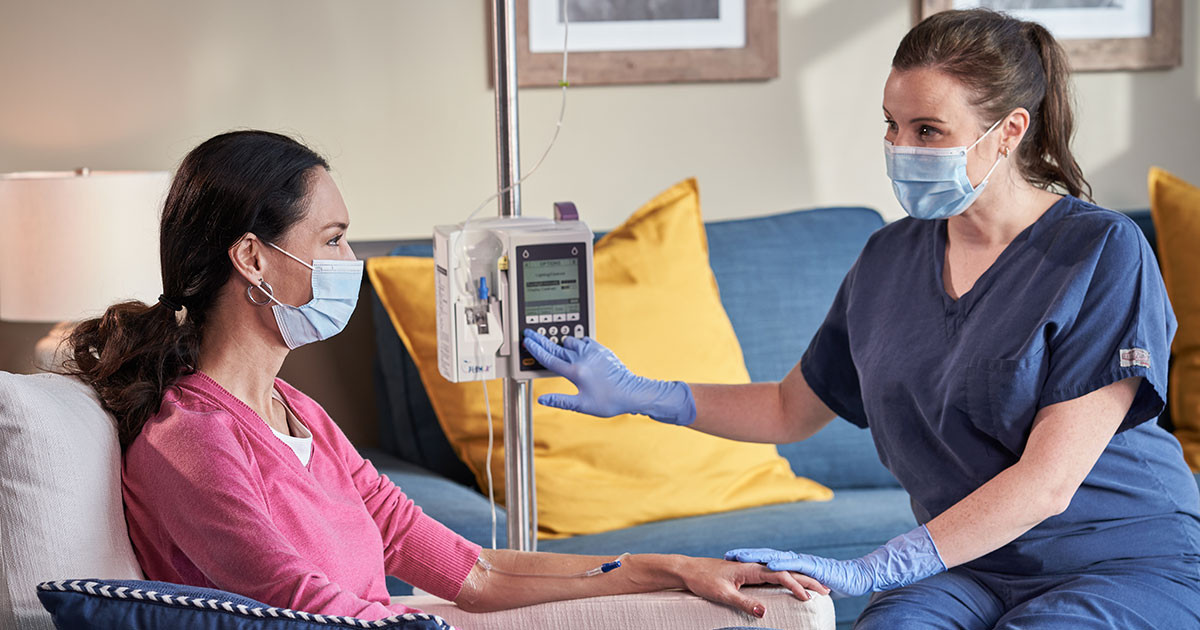Definition
A platelet aggregation test is conducted to assess the ability of platelets to clump together and form a blood clot. This test is also referred to as a platelet aggregometry test or platelet function test. It is part of a group of diagnostic tests called a blood clotting panel.
Platelets, or blood platelets, are a type of blood cell crucial for processes like inflammation, immune responses, tissue repair, and the regulation of bleeding. When an injury occurs, the body releases various chemicals that activate platelets to prevent further blood loss.
Platelets adhere to the interior of blood vessels and cluster to create a clot, which halts bleeding. A protein network forms around the clot to fortify it. Without functioning platelets, a person may experience bleeding that is difficult to stop, which can be severe and even life-threatening.
For the platelet aggregation test, a blood sample is taken. The sample is analyzed to observe the distribution of platelets in the plasma, the liquid part of the blood. A chemical is then introduced to the sample to evaluate the rate at which platelets aggregate to form a clot.
Indication
Your healthcare provider may suggest a platelet aggregation test if you have a bleeding disorder, abnormal platelet function, or a low platelet count. These conditions can lead to symptoms such as:
-
Excessive bleeding
-
Frequent or significant bruising
-
Bleeding from the gums or nose
-
Heavy menstrual bleeding
-
Presence of blood in urine or stool
This test may also be recommended if you have a family history of bleeding disorders.
Contraindication
A blood test carries minimal risk, and there are no specific contraindications that would prevent someone from undergoing this test.
However, certain individuals may have a slightly higher bleeding risk due to their medical condition. If you have a bleeding disorder, it is essential to inform your doctor so that the medical team can prepare accordingly. You should also notify your doctor if you have ever felt lightheaded, faint, or nauseous during a previous blood test.
Preparation Before the Test
Unless your doctor provides specific instructions, you may eat and drink before the test. The test can be scheduled at any time unless your doctor requests a specific time. It is recommended to avoid exercising for at least 20 minutes prior to the test.
Certain medications may influence the results of the platelet aggregation test. Inform your doctor about all the medications you are taking, including both over-the-counter and prescription drugs. Your doctor may advise you to temporarily stop taking certain medications or adjust dosages prior to the test.
Medications that could affect the platelet aggregation test include:
-
Nonsteroidal anti-inflammatory drugs (NSAIDs), such as aspirin or any medication containing aspirin
-
Antihistamines
-
Antibiotics, such as penicillins, some cephalosporins, and nitrofurantoin
-
Tricyclic antidepressants
-
Antiplatelet medications, including prasugrel, clopidogrel, dipyridamole, and ticlopidine
-
Theophylline, a drug used to relax airway muscles, commonly prescribed for asthma
-
Statin medications for cholesterol
Test Procedure
The platelet aggregation test requires the collection of a blood sample, which can be obtained in a clinic or laboratory setting.
Before taking the blood sample, the healthcare provider will wear gloves and clean the area surrounding your vein. Typically, blood is drawn from a vein in the front of your arm, near the bend of the elbow. The provider will then place an elastic band around your upper arm to help the blood pool in your vein, making it easier to collect.
A sterile needle will be inserted into your vein, and the provider will draw your blood. You might feel mild to moderate discomfort when the needle is inserted or when the blood is drawn. A prickling or burning sensation may occur, but relaxing your arm can help minimize the discomfort.
After the blood has been collected, the provider will remove the needle and apply pressure to the site to stop any bleeding. You should continue to apply pressure to the area to prevent bruising. The blood sample will then be sent to a laboratory for further testing.
Normal and Abnormal Value
The time required for platelets to aggregate can vary based on temperature and may differ from one laboratory to another. The test results will help determine if the platelets' ability to form blood clots is functioning normally, impaired, or showing excessive aggregation.
Results and Recommendations (Follow-up Tests)
The range of normal values can vary slightly between different laboratories. Some laboratories use different measurements. Talk to the doctor about the results of your tests.
Meanwhile, a decrease in platelet aggregation can be caused by:
- Autoimmune diseases that produce antibodies to platelets
- Certain genetic disorders that affect blood, such as:
- Bernard-Soulier Syndrome
- Von Willebrand Disease
- Tromboastenia Glanzmann
- Platelet storage pool disease
- Consumption of drugs that hinder the aggregation of platelets
- Bone cord irregularities, such as some type of sickle
- Uremia, which is a condition caused by severe kidney disease
In addition to examining platelet aggregation, doctors can recommend other routine blood tests. This can include other blood clot tests that see protein in your platelets, the time it takes to form blood clots, and blood clots.
You can undergo a complete blood test that sees the number of red blood cells, white blood cells, and platelets or blood coins. Low platelets can show a sign of other medical conditions, such as cancer or kidney disease.
Consult the Right Doctor
If you notice excessive bleeding, bruising, or any other signs of a blood disorder, contact your healthcare provider. Your doctor will evaluate your symptoms to determine if you require any treatment.
If your doctor deems it necessary to perform a platelet aggregation test, be sure to inform them about all the medications you are currently taking. This will help avoid potential interactions and excessive bleeding.
In case your results are abnormal, your doctor might refer you to an internist for further testing and treatment.
Looking for more information about laboratory, radiology, and other examination results? Click here!
- dr Hanifa Rahma
Christopher P Kellner, M.D. (2021) Platelet aggregation, Reference Range, Interpretation, Collection and Panels. Medscape. Available at: https://emedicine.medscape.com/article/2085904-overview?icd=login_success_email_match_norm#showall (Accessed: May 2, 2023).
Martel, J. (2019) Platelet aggregation test: Purpose, procedure, and risks, Healthline. Healthline Media. Available at: https://www.healthline.com/health/platelet-aggregation-test (Accessed: May 2, 2023).
Platelet aggregation test: Purpose, procedure, and results (2021) WebMD. WebMD. Available at: https://www.webmd.com/a-to-z-guides/what-to-know-about-platelet-aggregation-test (Accessed: May 2, 2023).











